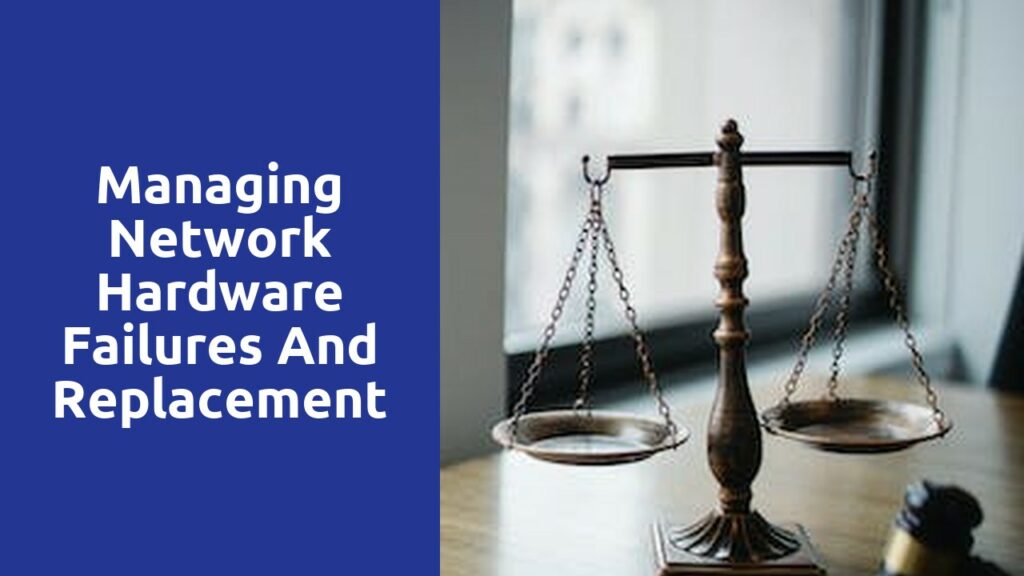Common Causes of Network Hardware Failures
One common cause of network hardware failures is overheating. When network equipment becomes overheated, it can lead to system failures and malfunctions. This is often caused by poor ventilation or inadequate cooling systems. Therefore, it is essential to ensure that network hardware is placed in a well-ventilated area and that cooling systems, such as fans or air conditioning, are properly functioning.
Another frequent cause of network hardware failures is power issues. Power surges or fluctuations can damage network equipment, resulting in failures. It is crucial to have stable power sources and consider using surge protectors or uninterruptible power supplies (UPS) to safeguard against power-related failures. Additionally, faulty power cables or connectors can also contribute to hardware failures, so regular inspections and replacements of such components are necessary to prevent disruptions in the network.
Signs and Symptoms of Network Hardware Failures
Network hardware failures can wreak havoc on any organization, causing disruptions and delays in daily operations. Recognizing the signs and symptoms of these failures is crucial for timely troubleshooting and minimizing downtime. One of the most obvious indications of a network hardware failure is a complete loss of connectivity. When devices cannot establish a connection with the network, it is a clear sign that there is an issue with the network hardware. Additionally, frequent disconnections and inconsistent network performance can also point to hardware problems. Slow data transfer speeds, dropped packets, and increased latency are all red flags that indicate potential hardware failures. These symptoms can greatly impact the productivity and efficiency of the network, requiring immediate attention and resolution.
Another common sign of a network hardware failure is the occurrence of error messages. These messages may appear on the devices connected to the network, indicating a specific hardware component that is malfunctioning. Error messages can include phrases such as “hardware failure detected” or “network adapter not found.” It is important to take these error messages seriously and investigate the hardware components mentioned in order to address the failure promptly. Furthermore, abnormal noises emanating from network devices, such as clicking or buzzing sounds, can also point towards hardware failures. These noises can indicate faulty fans, loose connections, or imminent component failures. Identifying and resolving hardware failures in a timely manner not only ensures the smooth operation of the network but also prevents further damage that could potentially disrupt the entire infrastructure.
Importance of Regular Network Hardware Maintenance
Network hardware maintenance plays a crucial role in ensuring the smooth functioning and efficiency of any network system. Regular maintenance of network hardware components such as routers, switches, and servers can significantly reduce downtime and prevent potential failures. With the increasing reliance on technology in today’s business world, it is essential to prioritize regular maintenance to avoid costly disruptions and maintain optimal network performance.
One of the key benefits of regular network hardware maintenance is the prevention of hardware failures. Over time, network hardware can experience wear and tear due to continuous usage, environmental factors, and other factors. These issues may go unnoticed until they escalate into major problems, causing complete network failure or significant disruptions. By conducting routine maintenance, technicians can identify and address potential issues proactively, ensuring that the hardware components remain in good working condition. This proactive approach not only minimizes the risk of hardware failures but also helps in extending the lifespan of the network equipment.
Best Practices for Network Hardware Replacement
When it comes to network hardware replacement, following best practices is essential to ensure a seamless transition and minimize downtime. One crucial step is to thoroughly assess the current network infrastructure and identify the specific hardware components that need replacement. This includes routers, switches, firewalls, and any other devices that play a crucial role in network connectivity. By conducting a thorough evaluation, organizations can determine the scope of the replacement project and plan accordingly.
Once the hardware in need of replacement has been identified, it is vital to establish a comprehensive implementation plan. This should include a detailed timeline, outlining when each hardware component will be replaced, and any necessary downtime that may be incurred during the process. Coordination with the IT team and other relevant stakeholders is crucial to ensure minimal disruption to daily operations. Additionally, adequate testing and validation of the new hardware should be performed before fully integrating it into the network to avoid compatibility issues or unforeseen challenges. By carefully planning and implementing the replacement process, organizations can mitigate potential risks and maintain a reliable network infrastructure.
Identifying the Right Network Hardware Vendor
When it comes to identifying the right network hardware vendor, there are several key factors that need to be considered. One of the most important aspects is the vendor’s reputation in the industry. It is essential to choose a vendor that has a solid track record and is known for delivering high-quality products and reliable services. By selecting a reputable vendor, you can ensure that you are getting hardware that will meet your network’s needs and withstand the test of time.
Another aspect to consider is the range of products and solutions offered by the vendor. Different network setups require different types of hardware, so it is crucial to choose a vendor that offers a wide variety of options. Whether you need switches, routers, firewalls, or other networking equipment, having a vendor that can provide a comprehensive range of products will save you time and effort in sourcing various components from different suppliers. Additionally, a vendor that offers scalable solutions can accommodate your network’s growth and adapt to evolving technology requirements.
As you strive to identify the right network hardware vendor, it is equally important to consider the vendor’s technical expertise and support. Network infrastructure can be complex, and technical issues may arise from time to time. Therefore, selecting a vendor that has a team of knowledgeable and responsive technical support professionals can be invaluable. This ensures that if any issues occur, you will have access to the necessary expertise to resolve them efficiently, minimizing downtime and disruption to your network’s operations.
Moreover, it is essential to evaluate the vendor’s pricing model and overall value for money. While cost should not be the sole determining factor, it is crucial to ensure that the vendor’s pricing aligns with the quality and functionality of their products. Some vendors may offer competitive prices initially but lack ongoing support or have hidden costs that become apparent later on. Therefore, it is essential to carefully review the pricing structure and agreement terms to ensure there are no surprises down the line.
Lastly, before finalizing your decision, it is advisable to conduct thorough research and gather feedback from other businesses or organizations that have worked with the vendor. This will provide insights into their overall experience, satisfaction with the hardware, and the level of customer service provided by the vendor. By considering all these factors, you can make an informed decision and identify the right network hardware vendor that will meet your current and future network needs effectively.
Factors to Consider When Choosing Network Hardware Replacement Options
When it comes to selecting network hardware replacement options, there are several key factors that businesses must consider. The first and foremost consideration is compatibility. Ensuring that the replacement hardware is compatible with the existing network infrastructure is crucial to avoid any disruptions or compatibility issues. Conducting a thorough assessment of the current network setup and understanding its specifications will provide valuable insights into the type of replacement hardware required.
Another important factor to consider is scalability. As businesses grow and their network requirements evolve, it is essential to choose replacement hardware that can scale accordingly. Investing in hardware that can accommodate future expansion will save both time and money in the long run. Additionally, assessing the scalability of the replacement options will help to determine the potential for future upgrades and ensure that the selected hardware can adapt to changing technological advancements.
Related Links
Managing Network Hardware Failures and Replacement
Troubleshooting Network Security Vulnerabilities

